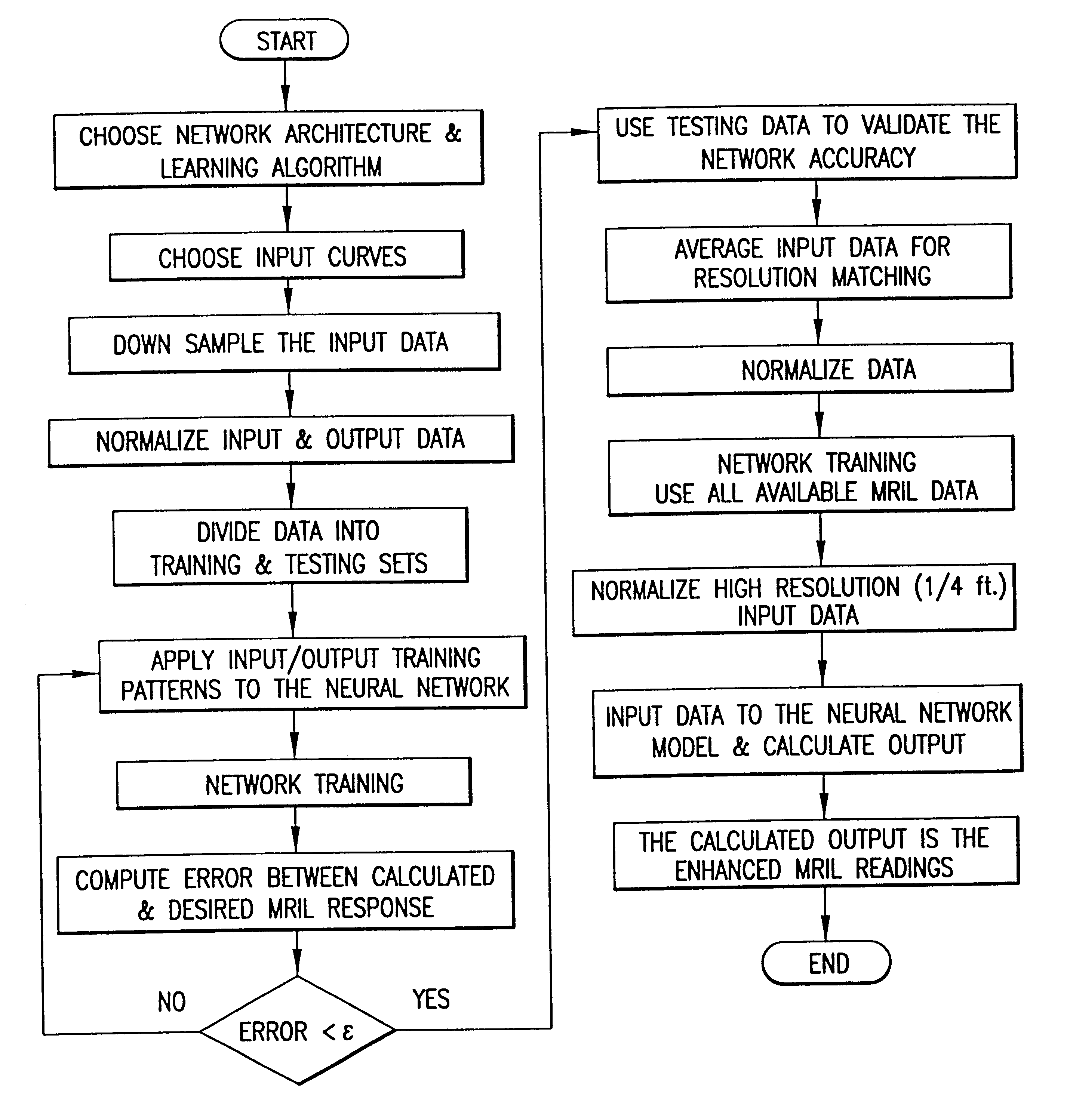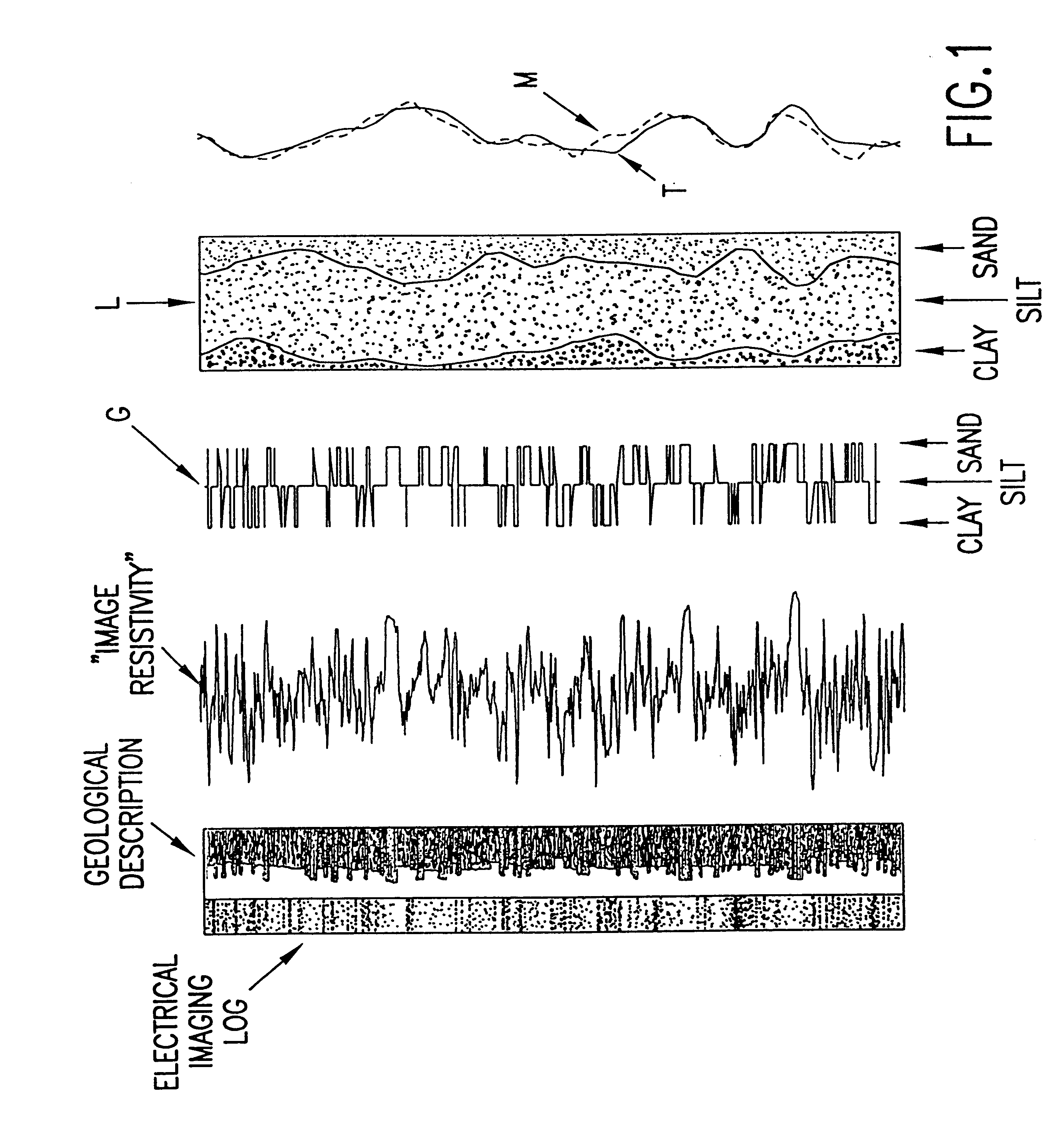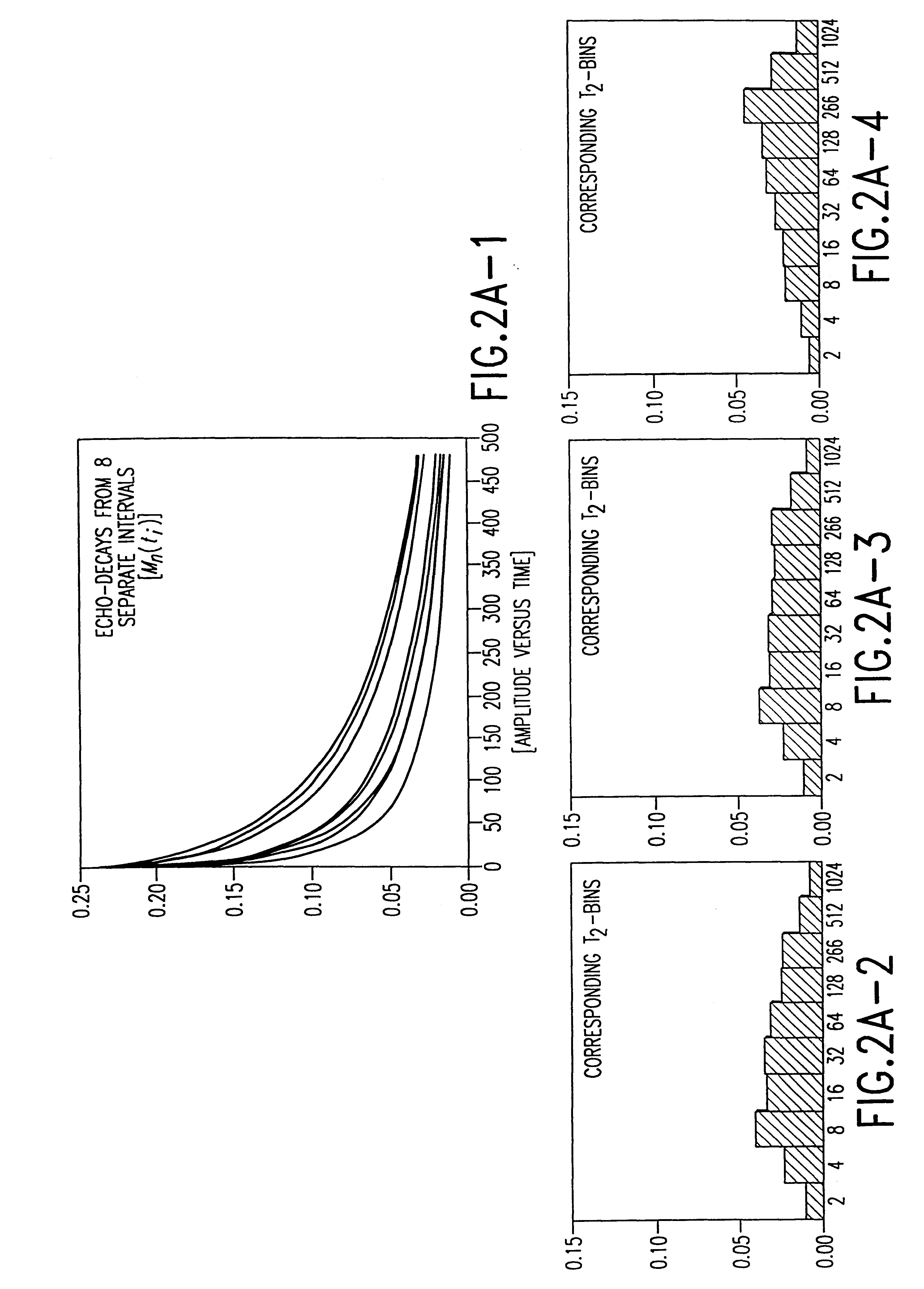System and method for enhanced vertical resolution magnetic resonance imaging logs
a technology of magnetic resonance imaging and logs, applied in the field of enhanced vertical resolution magnetic resonance imaging logs, can solve the problems of inability to exploit information available from time-dependent log sequences, such as nmr logs, prior art fails to utilize the potential of certain processing techniques, such as the use of neural networks, and enhance the resolution of log data. only linear process
- Summary
- Abstract
- Description
- Claims
- Application Information
AI Technical Summary
Problems solved by technology
Method used
Image
Examples
example 1
Field Example 1
Fort Worth Test Well
1. GEVR processing with MRIL and EMI data
MRIL, EMI, and other conventional suite of logs were run in a Halliburton test well in Fortworth, Tex. FIG. 8A shows the EMI image log for the depth interval between 500 and 525 ft depth, indicating possible lamination. FIG. 8B shows the processed MRIL data (T.sub.2 -bin distribution and average T.sub.2) and matched EMI resistivity data for the same depth interval. Note that the EMI resistivity data is sampled at every 1 / 10-in. interval. However, the EMI resitivity data in FIG. 8B is matched to the 4-ft resolution of MRIL.
FIG. 8C is a cross plot between the matched EMI conductivity and the average T.sub.2. Strong correlation indicated in the cross plot, except for the data from 500-525 ft interval, appears to justify the use of EMI resistivity as a high-resolution lithology measurement tool. FIG. 8D is a histogram of calibrated EMI conductivity collected at every 1 / 10-in. interval. The histogram indicates th...
example 2
Field Example 2
A Gulf of Mexico Reservoir
The GEVR processing in accordance with the present invention was also applied to the MRIL and EMI data logged in a Gulf of Mexico reservoir, as illustrated below.
Depth interval X422-X427 ft
The MRIL T.sub.2 -average and EMI resistivity averaged over 4-ft are plotted in FIG. 10A. Their cross plot (FIG. 10B) indicates that EMI resistivity may be used as a lithology indicator as the difference in T.sub.2 -average often caused by lithological change. The EMI conductivity histogram of FIG. 10C may indicate the cutoff conductivity to be at 23,000 mmho / m, which is the same as in the case of Fortworth test well.
The litho-weight is derived from the EMI conductivity, as shown in FIG. 10D, where the weight is computed over 1 / 2-ft interval in the left and over 4-ft interval in the right. The GEVR processing resulted in two litho-echo trains for sand and silt laminae, which correspond to the following two distinctly different lithology-types in T.sub.2 -di...
PUM
 Login to View More
Login to View More Abstract
Description
Claims
Application Information
 Login to View More
Login to View More - R&D
- Intellectual Property
- Life Sciences
- Materials
- Tech Scout
- Unparalleled Data Quality
- Higher Quality Content
- 60% Fewer Hallucinations
Browse by: Latest US Patents, China's latest patents, Technical Efficacy Thesaurus, Application Domain, Technology Topic, Popular Technical Reports.
© 2025 PatSnap. All rights reserved.Legal|Privacy policy|Modern Slavery Act Transparency Statement|Sitemap|About US| Contact US: help@patsnap.com



